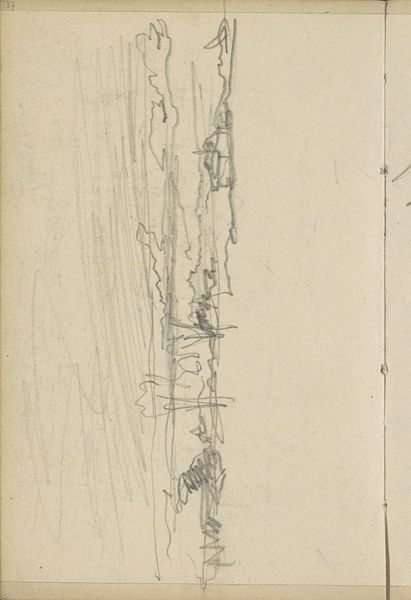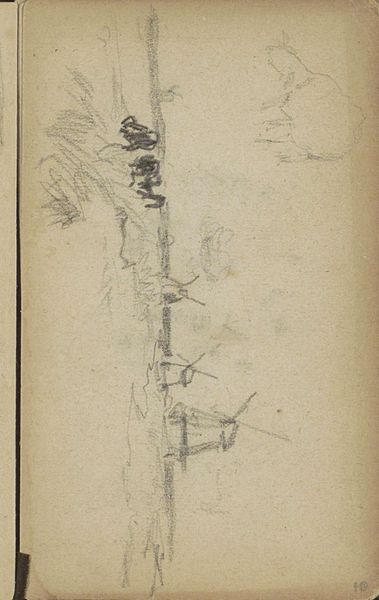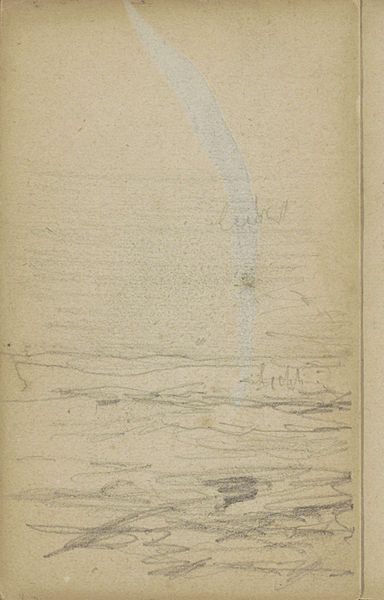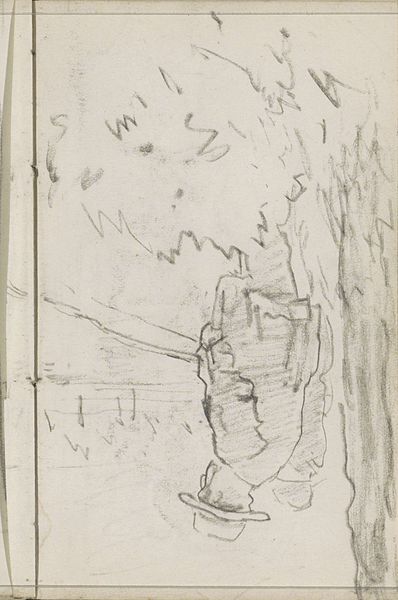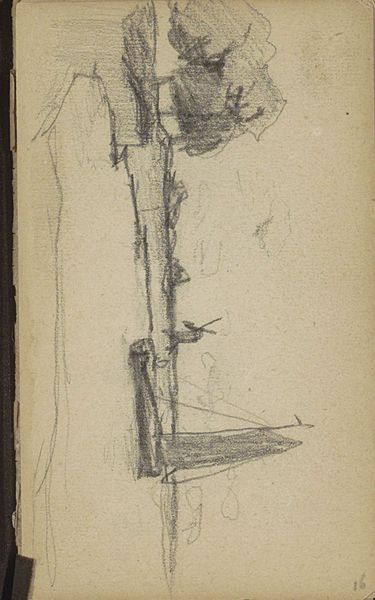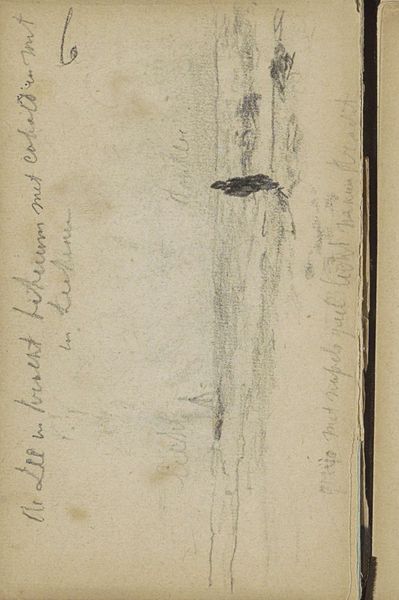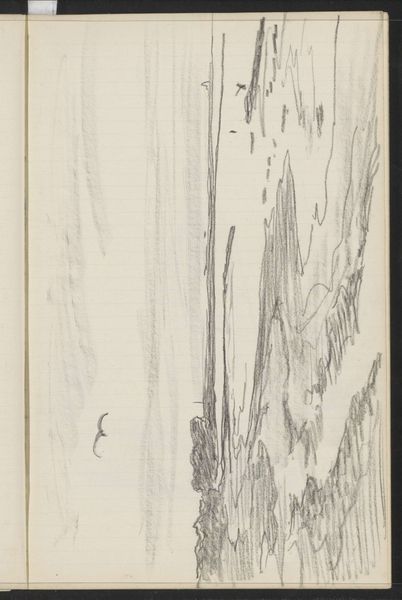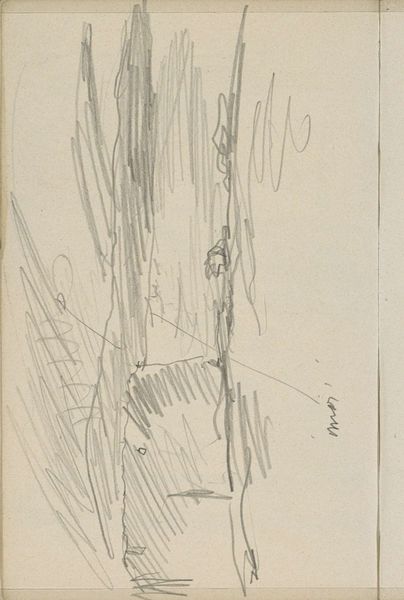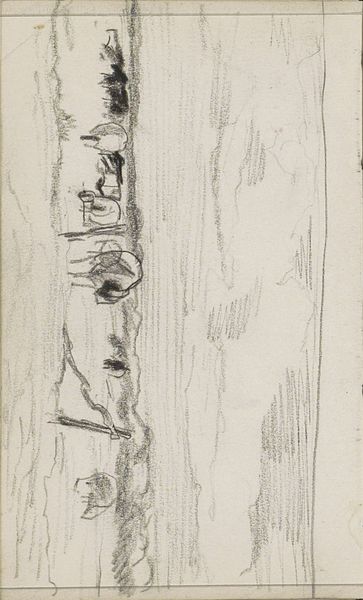
drawing, paper, pencil
#
portrait
#
drawing
#
impressionism
#
landscape
#
figuration
#
paper
#
pencil
Copyright: Rijks Museum: Open Domain
Editor: We’re looking at Johan Hendrik Weissenbruch’s "Zeegezicht," a pencil drawing on paper, dating between 1834 and 1903, housed here at the Rijksmuseum. The sketchiness makes it feel very immediate, like a fleeting impression captured quickly. What stands out to you in this piece? Curator: Well, beyond the immediate aesthetic, it’s interesting to consider Weissenbruch within the context of the Hague School. He aimed to capture the atmospheric conditions of the Dutch landscape, elevating the mundane to high art. How do you see this aim reflected in "Zeegezicht"? Editor: I guess it’s in the sketchiness - like the drawing feels so raw and unrefined, mirroring the ever-changing, unpredictable nature of the sea. Is there a socio-political element to that, like choosing ordinary subjects over grand historical themes? Curator: Absolutely. This shift reflects a broader movement away from academic art traditions towards realism and naturalism, often tied to emerging national identities and pride in the local. Instead of glorifying heroic events, artists turned their attention to the lives and landscapes of their nation. Do you notice any contrast between the dark strokes depicting a face at the upper-left of the image and the softer strokes to its right that show a human shape? Editor: I do. Maybe it is just an attempt to depict humans in multiple mediums. Curator: Good point, although it may reflect on the fact that artists turned to realism to depict humans in the Netherlands, there was a big gap in their rendering skills at that time. What do you make of it now? Editor: I now get a better understanding of this landscape in terms of its artistic background. Curator: Indeed, it's always enriching to consider how artworks respond to and shape their historical moment.
Comments
No comments
Be the first to comment and join the conversation on the ultimate creative platform.

